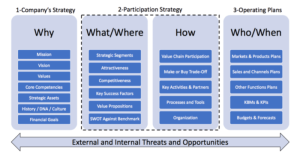
Exploring the realm of Virtual Sales Training Solutions, this introduction delves into the significance of virtual platforms in revolutionizing sales training. From discussing key benefits to sharing practical implementation tips, this narrative sets the stage for a comprehensive understanding of virtual sales training solutions.
Providing insights into the evolving landscape of sales training, this introductory paragraph aims to captivate readers with a blend of informative content and engaging style.
Virtual Sales Training Solutions

Virtual sales training solutions refer to the use of online platforms and tools to deliver training programs and resources to sales teams remotely. This approach allows sales professionals to enhance their skills, knowledge, and performance without the need for in-person sessions.
Examples of Virtual Platforms Used for Sales Training
- Zoom: A popular video conferencing platform used for live virtual training sessions and webinars.
- Salesforce Trailhead: An online learning platform that offers interactive modules and courses for sales training.
- LinkedIn Learning: Provides a wide range of sales-related courses that can be accessed remotely.
Benefits of Adopting Virtual Sales Training Solutions
- Flexibility: Sales teams can access training materials at their convenience, allowing for self-paced learning.
- Cost-effective: Eliminates the need for travel and accommodation expenses associated with in-person training sessions.
- Scalability: Virtual training can easily accommodate a large number of participants from different locations.
- Real-time feedback: Tools like chat features and polls enable immediate interaction and feedback during training sessions.
Best Practices for Implementing Virtual Sales Training Programs
- Set clear objectives and goals for each training session to ensure alignment with sales targets.
- Utilize interactive tools such as quizzes, simulations, and role-playing exercises to engage participants.
- Provide access to resources and materials for ongoing learning and reinforcement of key concepts.
- Encourage participation and collaboration among team members to foster a sense of community and shared learning.
Sales Training Strategies

Sales training plays a crucial role in enhancing the performance of sales teams by equipping them with the necessary skills and knowledge to succeed in a competitive market.
Importance of Sales Training
Effective sales training is essential for improving sales performance and achieving business goals. It helps sales professionals enhance their communication skills, product knowledge, and closing techniques, leading to increased sales and revenue.
Traditional vs. Virtual Sales Training Methods
Traditional sales training methods often involve in-person workshops or classroom sessions, which can be costly and time-consuming. On the other hand, virtual sales training solutions offer flexibility, cost-effectiveness, and accessibility, allowing sales teams to undergo training from anywhere at any time.
Key Components of Effective Sales Training Strategy
- Clear Objectives: Define specific goals and outcomes of the training program.
- Interactive Training Modules: Incorporate engaging and interactive content to enhance learning retention.
- Ongoing Coaching and Feedback: Provide continuous support and feedback to reinforce learning and improve performance.
- Role-Playing Exercises: Simulate real-life sales scenarios to practice and improve selling skills.
- Performance Evaluation: Regularly assess sales team performance to identify areas for improvement.
Tips for Designing Personalized Sales Training Programs
- Understand Individual Needs: Tailor training programs to address the specific needs and skill gaps of each sales professional.
- Utilize Technology: Incorporate interactive tools and platforms to deliver personalized training content.
- Encourage Self-Paced Learning: Allow sales professionals to learn at their own pace and revisit training modules as needed.
- Provide Continuous Support: Offer ongoing coaching, mentoring, and resources to support the learning journey.
- Evaluate Success Metrics: Measure the effectiveness of the training program through key performance indicators and adjust strategies accordingly.
Concluding our discussion on Virtual Sales Training Solutions, we reflect on the transformative power of virtual platforms in enhancing sales performance. From personalized training programs to effective strategies, the journey through virtual sales training solutions leaves a lasting impact on sales professionals worldwide.
FAQ Summary
What are some common virtual platforms used for sales training?
Some common virtual platforms include Zoom, Microsoft Teams, and Salesforce Chatter.
How do virtual sales training solutions compare to traditional methods?
Virtual solutions offer flexibility, cost-effectiveness, and scalability compared to traditional methods.
What are the key benefits of adopting virtual sales training solutions?
The benefits include global reach, real-time feedback, and reduced training costs.
What best practices should be followed when implementing virtual sales training programs?
Key best practices include interactive sessions, multimedia content, and regular performance evaluations.
How can personalized sales training programs be designed effectively?
Personalized programs can be designed by analyzing individual needs, setting clear objectives, and providing ongoing support.





